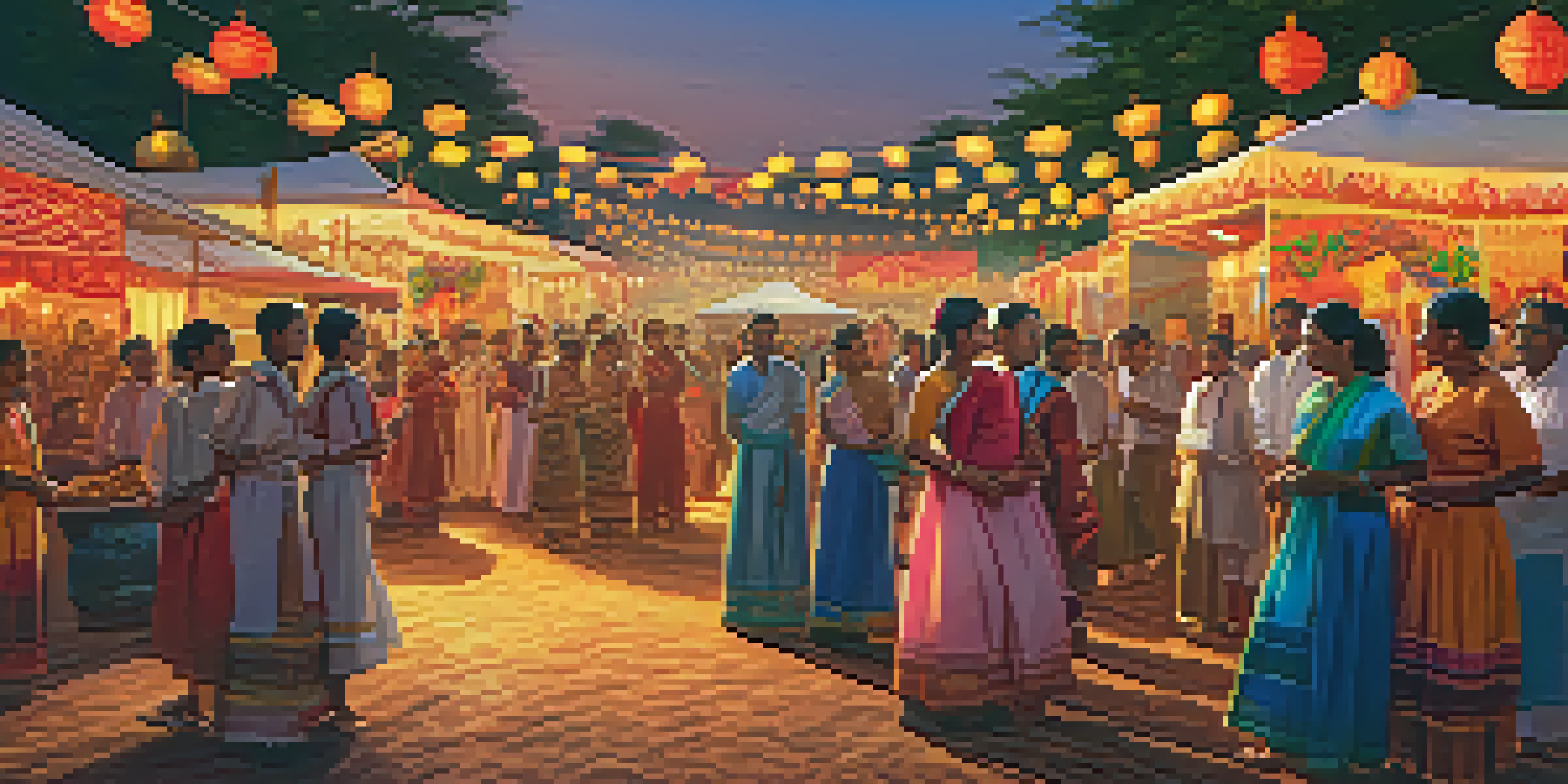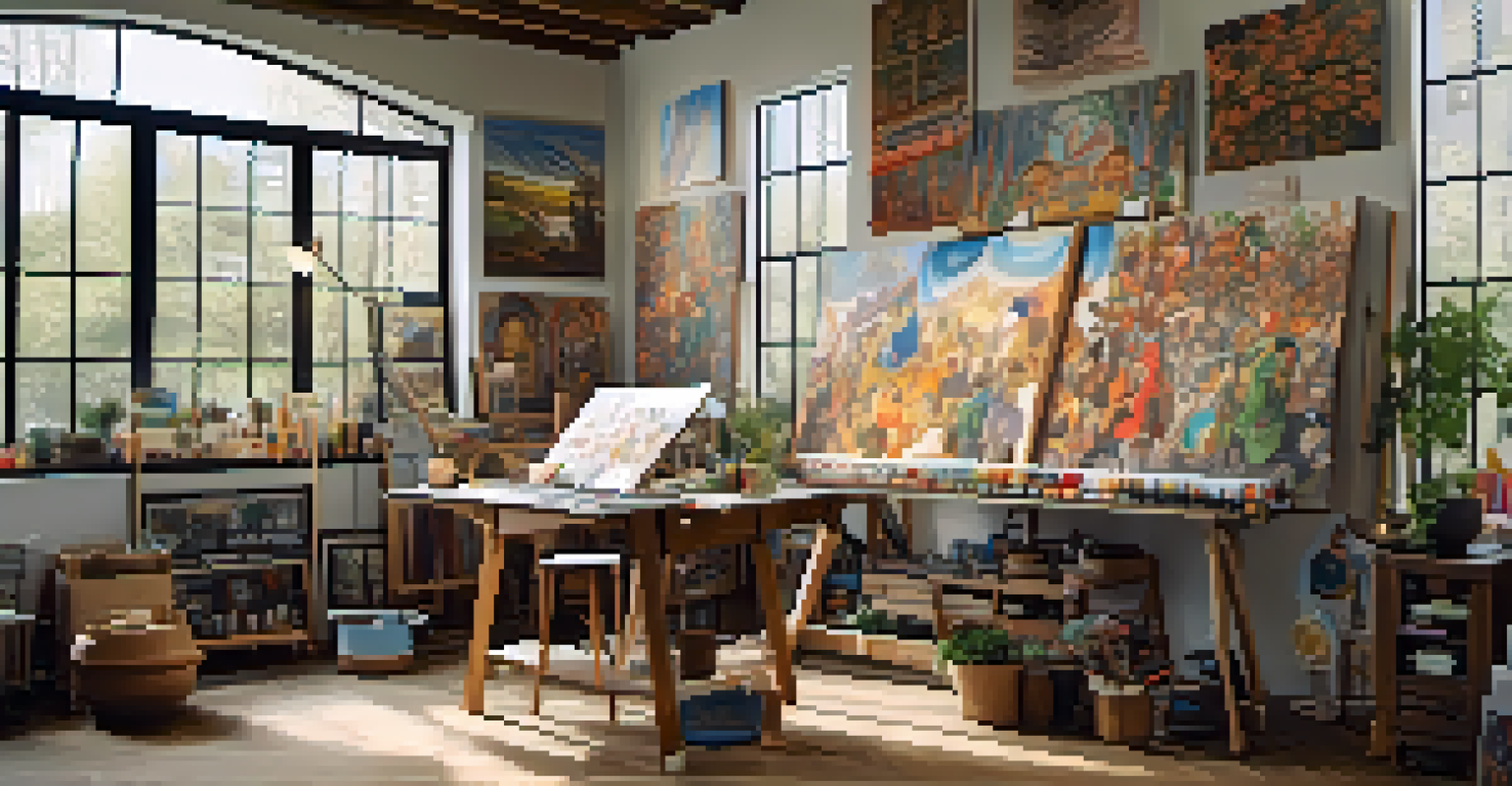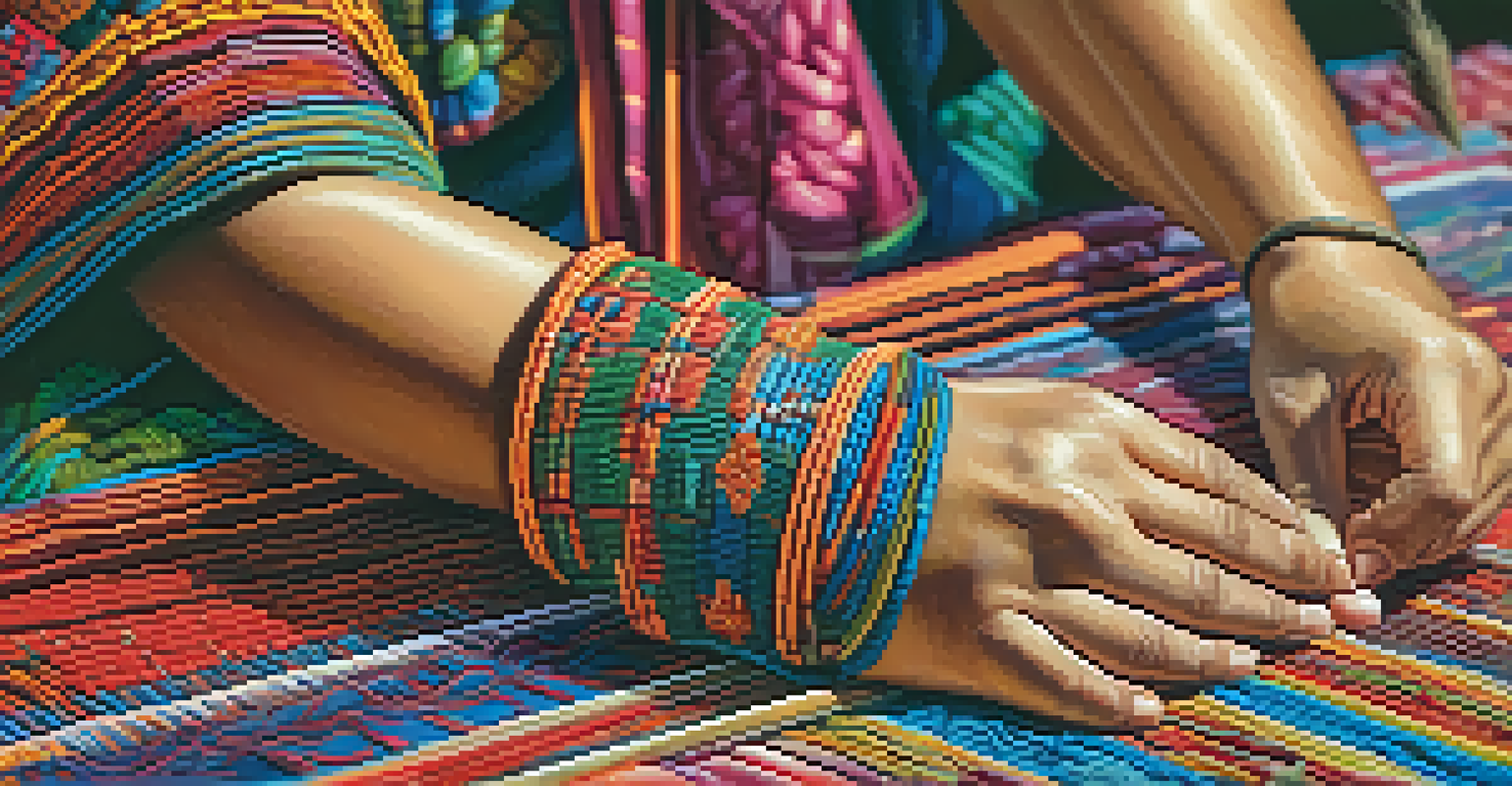The Influence of Cultural Appropriation on Contemporary Art

Understanding Cultural Appropriation in Art
Cultural appropriation occurs when elements of one culture are taken and used by members of another culture, often without permission. In the realm of art, this can manifest in various forms, such as fashion, music, and visual arts. It's important to recognize that the line between appreciation and appropriation is often blurred, making this a complex issue in contemporary society.
Cultural appropriation is often a manifestation of power dynamics, where the dominant culture exploits the traditions of marginalized groups.
For example, when a designer incorporates traditional Indigenous patterns into their clothing line without acknowledging their origins, it raises ethical questions. These patterns often hold deep cultural significance, and their commodification can be seen as disrespectful. Thus, understanding the roots of cultural appropriation is crucial for both artists and audiences alike.
By examining this phenomenon, we can better appreciate the rich tapestry of influences that shape contemporary art while also recognizing the potential harm that can arise from appropriation. As we dive deeper into this topic, we'll explore its implications for artists, audiences, and the art world as a whole.
The Impact of Cultural Appropriation on Artists
For many artists, cultural appropriation can lead to a double-edged sword. While it may offer inspiration and new avenues for creative expression, it can also result in backlash and criticism. Artists must navigate this delicate balance, as their work can be perceived positively or negatively depending on the context in which it is presented.

An example of this can be seen in instances where well-known artists adopt styles or motifs from marginalized cultures. While they may intend to celebrate these influences, they risk undermining the original culture's significance. This dynamic often leads to discussions about ownership and authenticity in art.
Cultural Appropriation vs. Appreciation
Understanding the difference between cultural appropriation and appreciation is vital for artists and audiences to foster respect and authenticity.
Ultimately, artists are increasingly aware of their responsibility in the creative process. By engaging with other cultures respectfully and acknowledging their origins, they can create work that not only resonates with audiences but also honors the cultural heritage from which it draws inspiration.
Audience Perception and Cultural Sensitivity
The audience's perception of art plays a significant role in the discourse around cultural appropriation. As viewers, we bring our own experiences and biases to our interpretation of art, which can influence our understanding of what constitutes appropriation versus appreciation. This means that conversations surrounding cultural sensitivity are essential.
Appreciation without context is appropriation.
For instance, an art piece that incorporates elements from another culture may be celebrated by some while criticized by others. This disparity often arises from differing levels of awareness regarding the cultural significance of those elements. Engaging in open dialogue can help bridge these gaps and foster understanding.
As audiences become more informed about the impacts of cultural appropriation, they are more likely to support artists who are mindful of their influences. This shift in perception can ultimately lead to a more inclusive art scene that values authenticity and respect over mere imitation.
Cultural Appropriation vs. Cultural Appreciation
One of the key debates in contemporary art is the distinction between cultural appropriation and cultural appreciation. While both involve the use of elements from different cultures, appreciation emphasizes respect and understanding, whereas appropriation often involves exploitation. This distinction is vital for artists and audiences to consider.
For example, attending a cultural festival and learning about its traditions can lead to a genuine appreciation of that culture. In contrast, using cultural symbols in a commercial project without context or respect can fall into the realm of appropriation. Navigating these nuances can help foster a more respectful artistic landscape.
Education's Role in Cultural Sensitivity
Education can empower artists and audiences to engage with cultural differences respectfully, reducing instances of appropriation.
By promoting cultural appreciation, artists can create work that is not only visually appealing but also meaningful. This approach encourages collaboration, dialogue, and education, allowing for a richer exchange of ideas and traditions across cultures.
The Role of Education in Addressing Cultural Issues
Education plays a crucial role in addressing issues related to cultural appropriation in art. By fostering awareness and understanding of different cultural practices, art institutions can help artists and audiences navigate these complexities. Workshops, lectures, and community engagement initiatives can provide valuable insights into the significance of cultural elements.
Art schools and programs that include courses on cultural sensitivity can equip future artists with the tools they need to create responsibly. Additionally, discussions around cultural heritage and its representation can lead to a more informed and conscientious approach to artistic expression. This proactive stance can help reduce instances of appropriation.
Ultimately, education can empower both artists and audiences to engage with cultural differences in a respectful manner. By prioritizing learning and dialogue, we can contribute to a more inclusive and diverse art world that honors the richness of all cultures.
Contemporary Artists Challenging Appropriation
Many contemporary artists are actively challenging the notion of cultural appropriation through their work. They often redefine how cultural elements can be represented, emphasizing collaboration and dialogue over mere imitation. This approach not only enriches their art but also opens up conversations about identity and representation.
For instance, artists from marginalized backgrounds may draw upon their cultural heritage to create pieces that reflect their unique experiences. By doing so, they reclaim and celebrate their cultural narratives, offering a counter-narrative to appropriation. This shift highlights the importance of authenticity and personal connection in the artistic process.
Inclusive Art Requires Collaboration
Creating a more inclusive art landscape involves artists, audiences, and institutions collaborating to appreciate and honor diverse cultures.
These artists serve as role models, demonstrating that it is possible to create meaningful art while respecting cultural boundaries. Their work encourages others to think critically about their influences and challenge the status quo, ultimately leading to a more inclusive art world.
Moving Towards a More Inclusive Art Landscape
As we consider the influence of cultural appropriation on contemporary art, it's clear that a more inclusive and respectful approach is needed. Artists, audiences, and institutions alike must work together to create a dialogue that fosters understanding and appreciation of diverse cultures. This collaborative effort can help bridge gaps and create a more harmonious art scene.
Encouraging artists to engage with cultural elements thoughtfully and respectfully can lead to richer artistic expressions. Additionally, audiences can support artists who prioritize authenticity and cultural significance in their work. By doing so, we can collectively contribute to a more equitable and diverse art landscape.

In conclusion, while cultural appropriation presents challenges, it also offers opportunities for growth and learning within the art community. By embracing cultural appreciation and fostering collaboration, we can create a vibrant and inclusive artistic environment that honors the richness of all cultures.